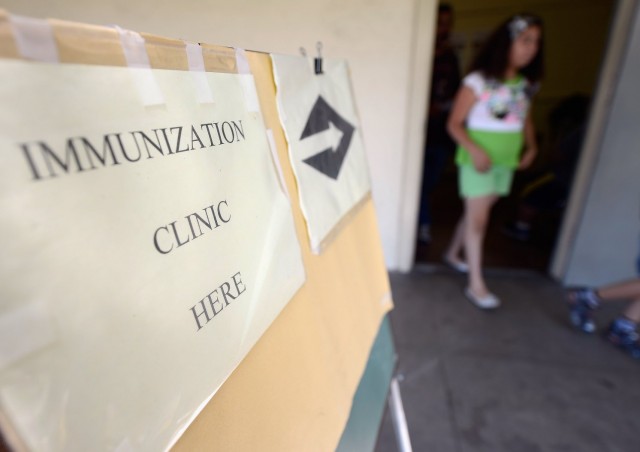Pertussis is very contagious, spreading quickly through a community. So the researchers had to map not only the location of outbreak clusters, but also when they appeared.
They found that people who lived in areas with high rates of personal belief exemptions were 2 1/2 times more likely to live in a place with lots of pertussis cases. "The exemptions clustered spatially and were associated with clusters of cases," Jessica Atwell, a graduate student at Johns Hopkins Bloomberg School of Public Health and lead author on the study, told NPR. It was published online in the journal Pediatrics.
Both exemptions and clusters of pertussis cases tended to be in neighborhoods with higher levels of education and income. Statewide about 2 percent of parents file an exemption, but the number varied hugely from one community to the text. In some schools more than three-quarters of the families filed exemptions.
[Related: More California Parents Opt Out of Vaccines; Look Up Your School Online]
When the number of people vaccinated drops below 95 percent, a community loses herd immunity to highly contagious germs like pertussis, and babies and other unvaccinated people can get sick. In 2010, 91 percent of kindergarteners were up to date on their shots in California.
Vaccine refusal wasn't the only factor fueling the California outbreak. Pertussis is a cyclical disease. Protection from the current version of pertussis vaccine appears to fade more quickly than doctors originally thought, so many older children vaccinated as youngsters were no longer immune to the bacterium. And many adults had never gotten a booster.
Finally, this study couldn't tell if the parents who filed exemptions had vaccinated their children against some diseases, or which ones.
California has since launched a statewide campaign to get both children and adults vaccinated, with a booster required for attendance at middle school. While parents can still file a personal belief exemption, a new state law taking effect Jan. 1, 2014 will require them to meet with a health care provider first.
